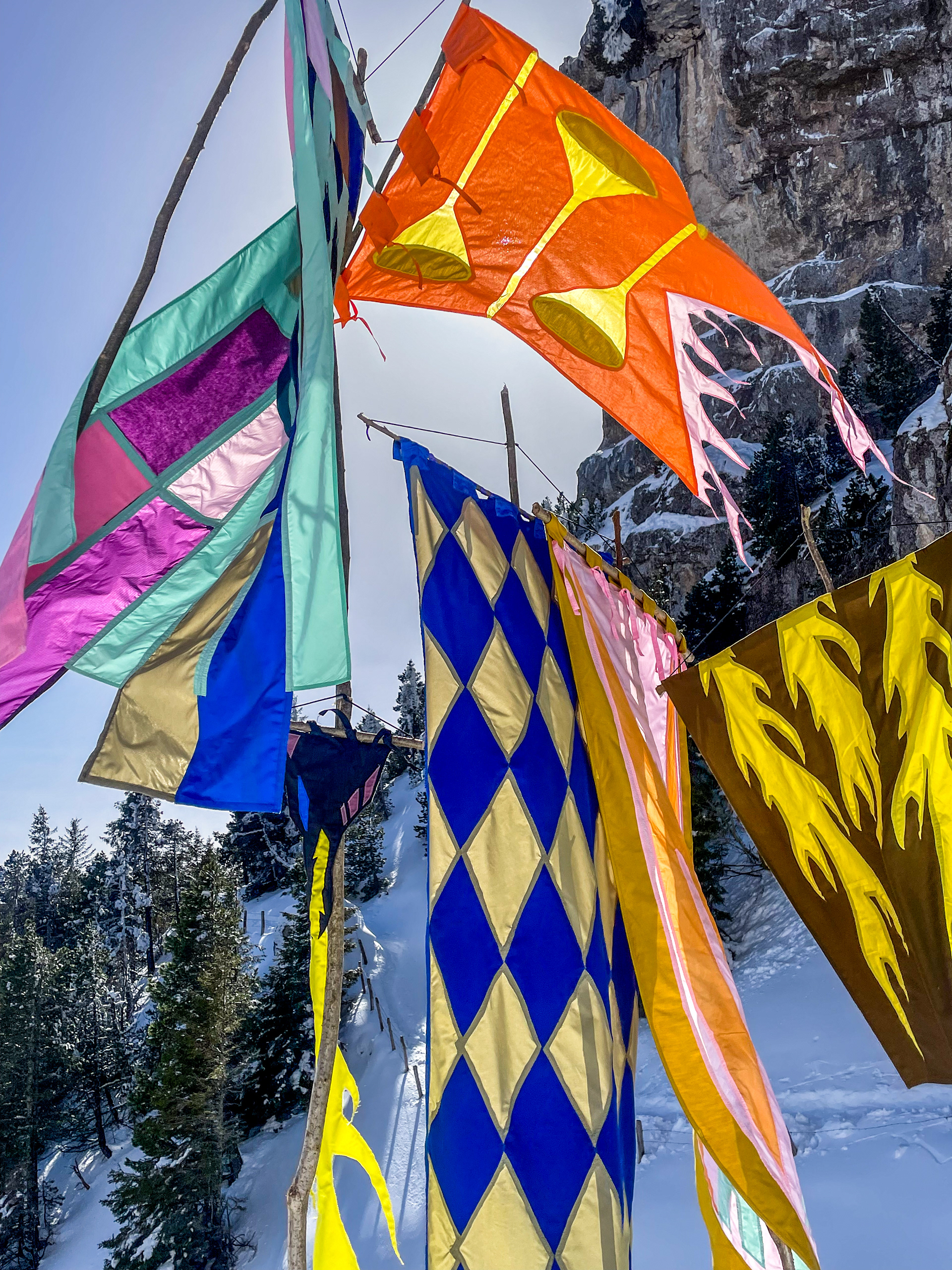
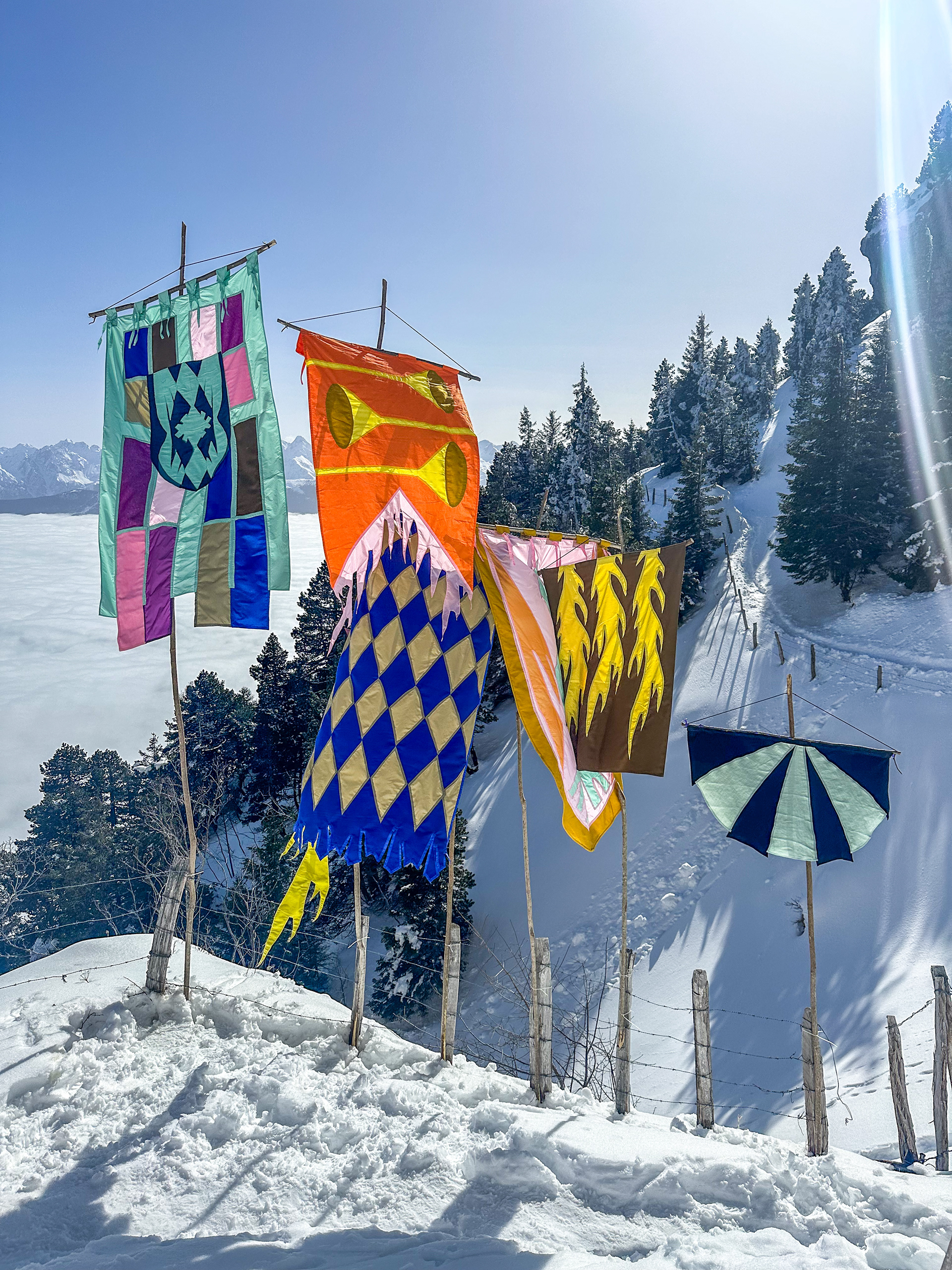
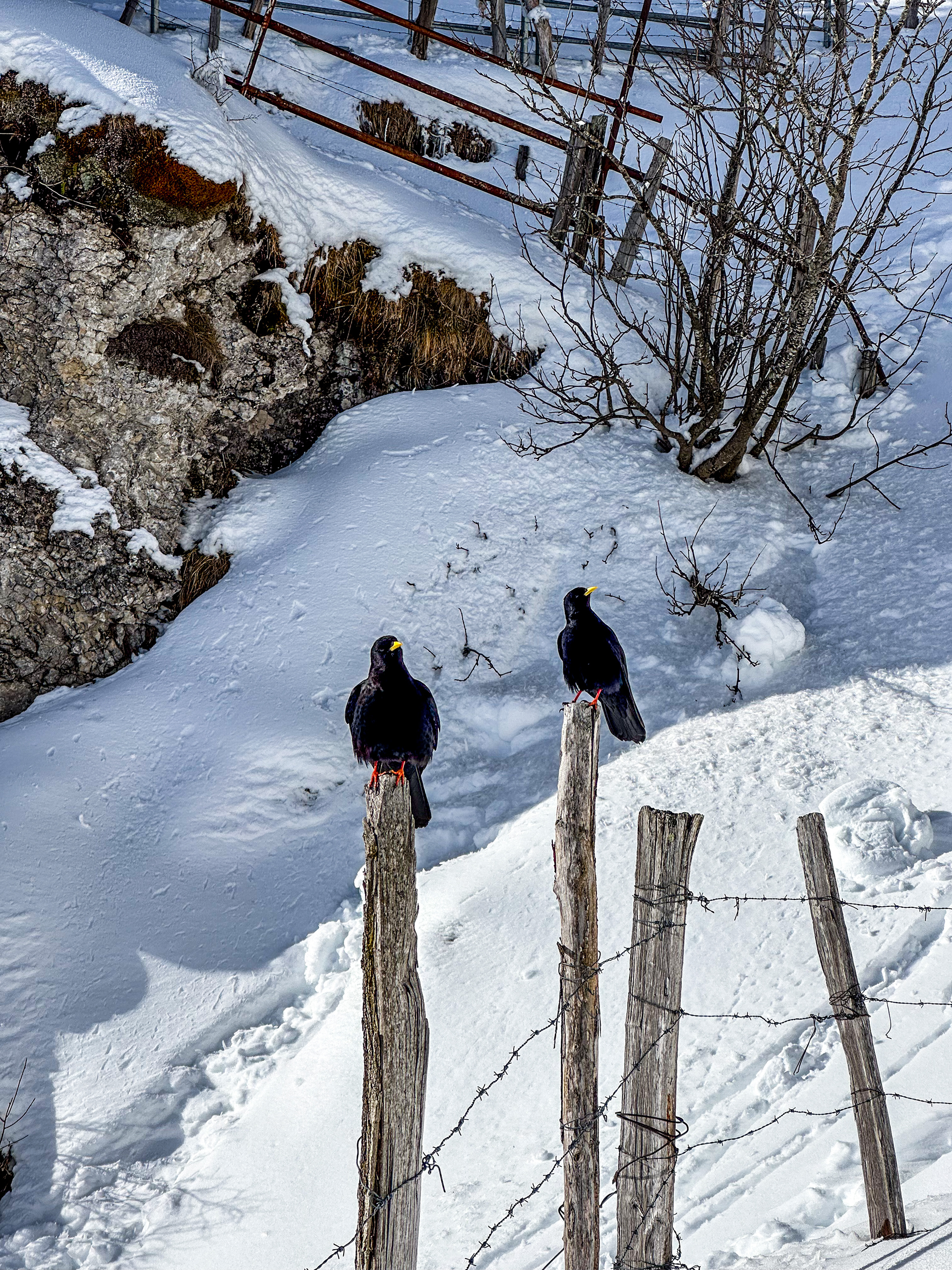
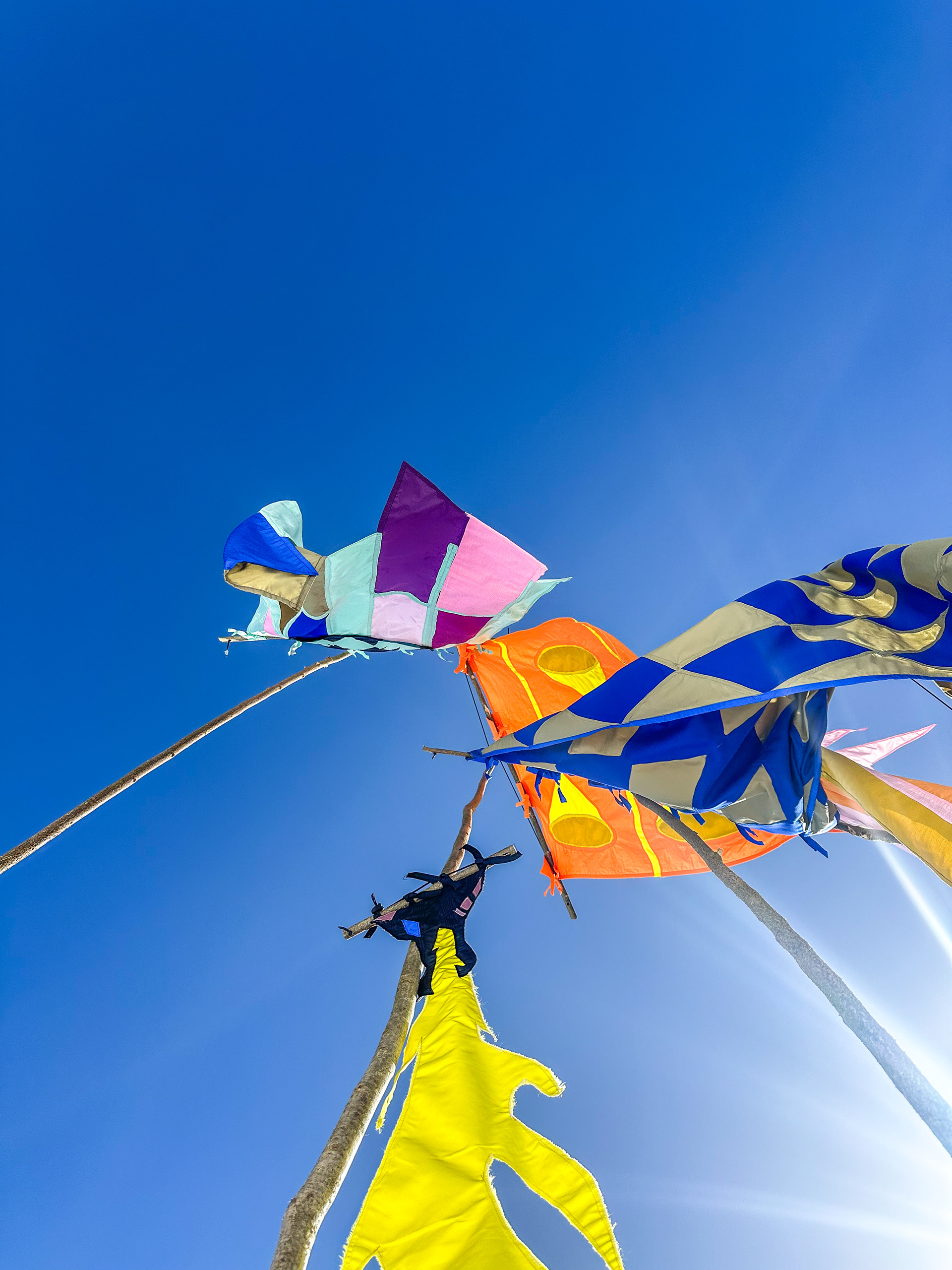
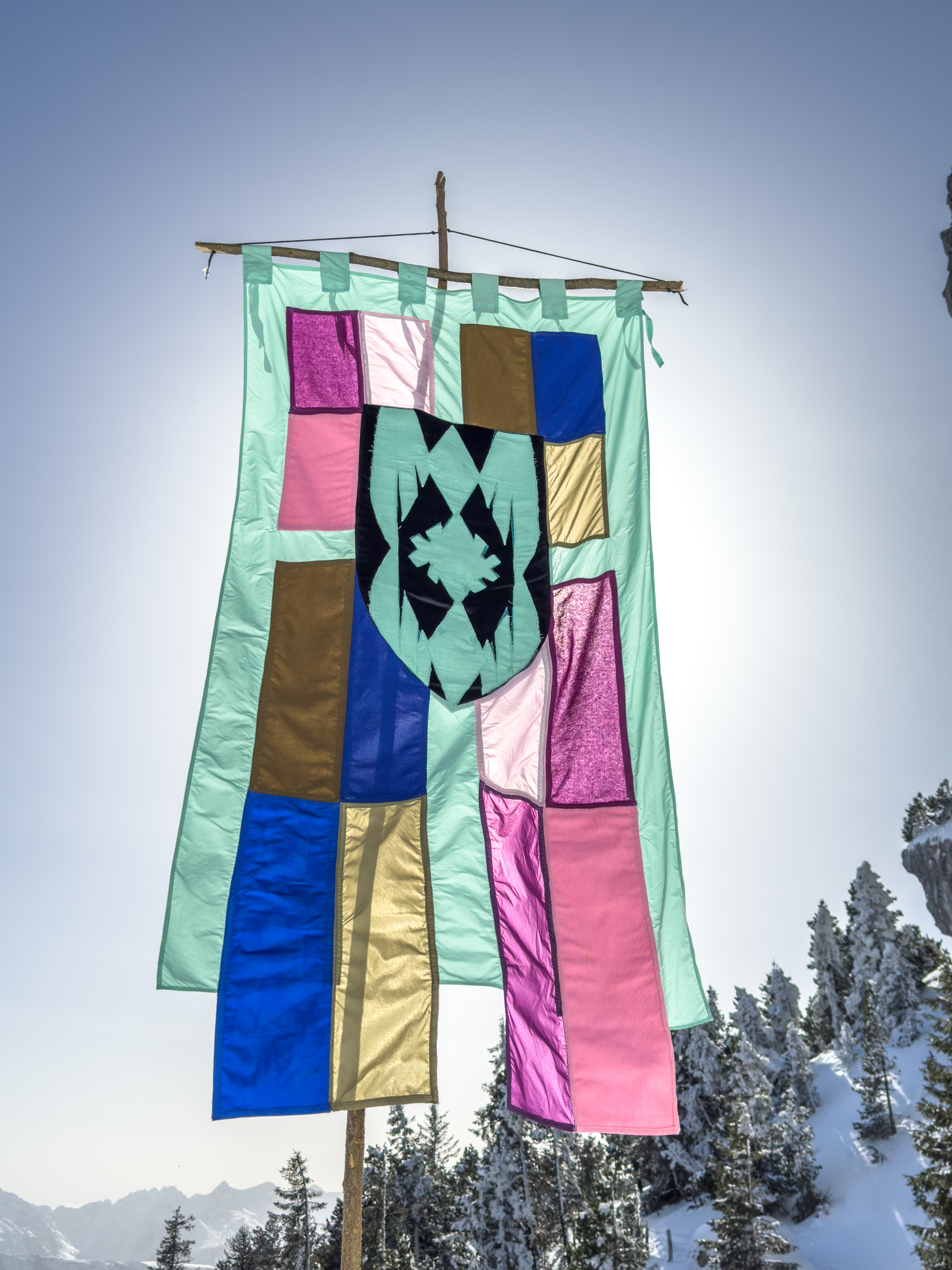
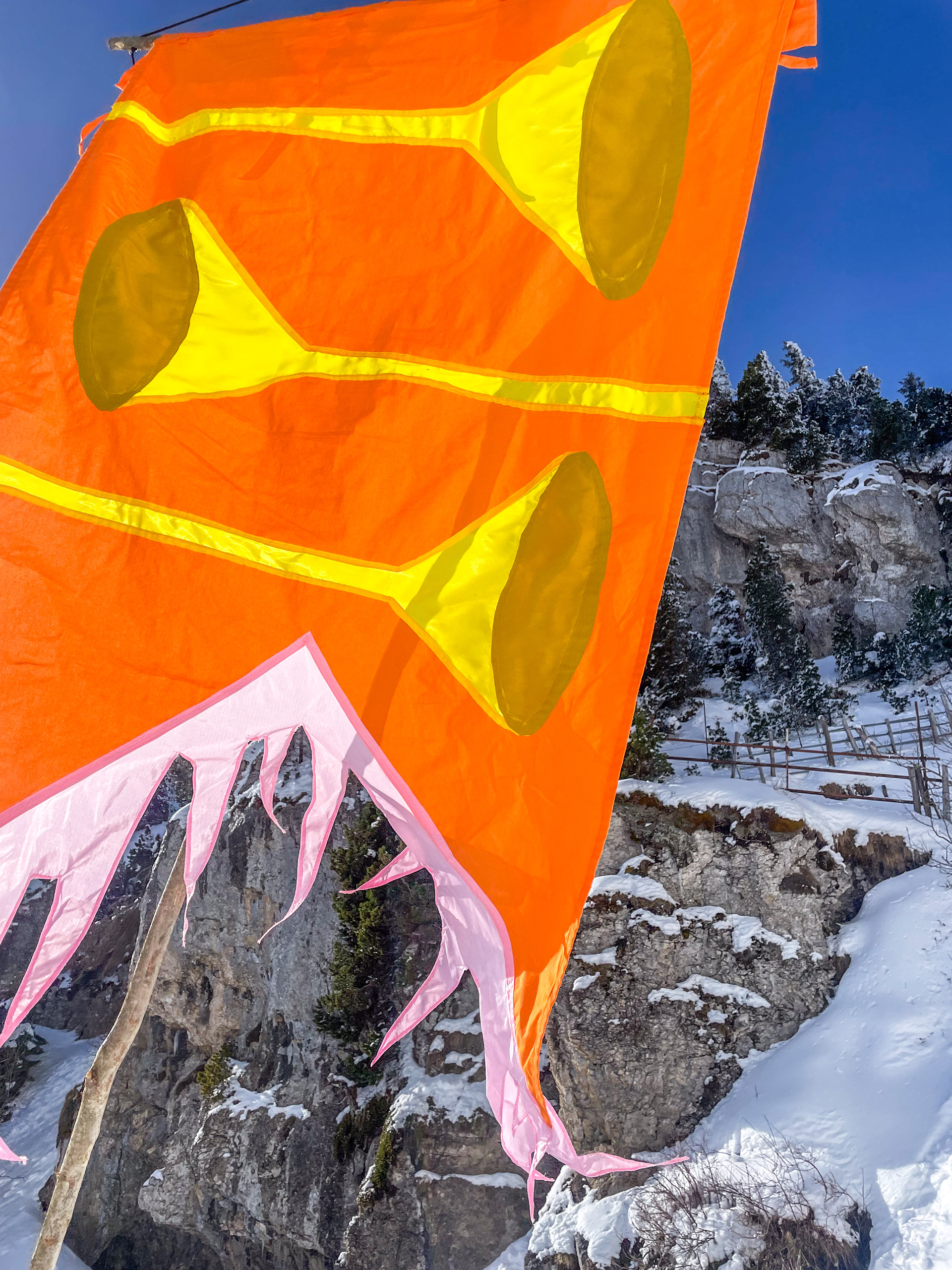
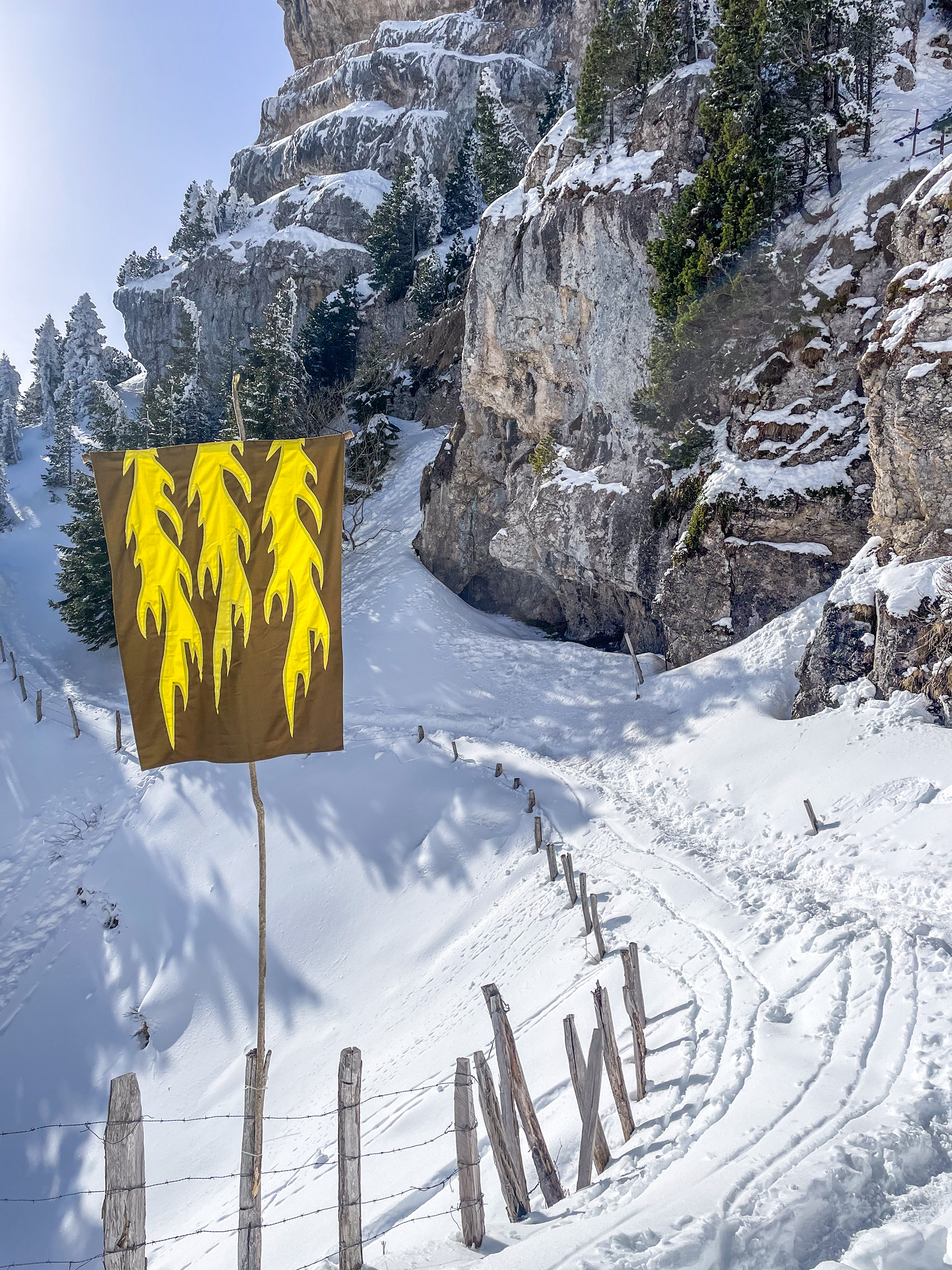


In the heart of the Chartreuse mountains, the installation unfolds like a reverie suspended between sky and stone. Drawing inspiration from the aesthetic of Disney's Sleeping Beauty (1959), this installation offers a contemporary reinterpretation of the Grimm Brothers' tale. The banners, floating like dreamlike fragments, reinterpret the film’s aesthetic symbols through the lens of current ecological and social issues. Creating a dialogue between the story’s fairy-tale imagination and contemporary reality, the banners display graphic motifs inspired by the curves and saturated colors of the 1959 animation. Their contrast with the surrounding nature evokes a dream frozen in time, a scene where fairy-tale beauty confronts the individualistic forces that today transform natural spaces. Here, the limestone hectares themselves become Aurora, a slumbering Chartreuse, a victim not of a magical curse but of land privatization and appropriation. Like the fairy in the original tale, these actions trap the mountain in a deep sleep, transforming nature into confiscated territory. The banners, raised atop branches, embody the physical and ideological boundaries erected by privatization, cutting off access to what was once common. These banners, swaying in the wind, recall the insidious spread of such practices, gradually wrapping around nature itself. The ritual of the installation becomes a performative act. After a two-hour walk at dawn, the two artists carry branches and banners in a solemn procession, evoking a pilgrimage to a slumbering natural sanctuary. Once atop the mountain, the banners are hoisted—a symbolic and poetic gesture that questions the boundary between the dreamlike and the real, between the magic of a magnified nature and its confinement by private interests. By revisiting the fairy tale through a classic aesthetic, The Marquis of the Sleeping Woods reminds us that the relationship between humans and nature is never fixed. It evolves, just like the stories we tell ourselves to legitimize or challenge this relationship.
